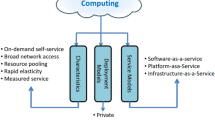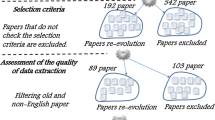Abstract
Real-time online interactive application (ROIA) is an emerging large scale distributed application in recent years. To satisfy the high demands on performance, ROIA needs a highly robust and efficient architecture to cope with the huge concurrent users. Previous works are almost based on the Client/Server or Peer to Peer mode, and their scalability and resource utilization are relatively low. So we try to take advantage of the cloud computing technologies to achieve higher scalability and resource utilization. However, the node failure is no longer considered to be an accidental event, but a normal one in the cloud computing. Therefore, there are higher requirements for fault tolerance in ROIA. In this paper, we propose a new fault-tolerant architecture for ROIA in cloud, which is based on cell overlapping technique. This new architecture provides redundancy to enhance the robustness and the scalability of ROIA. We focus on analyzing three merits of new architecture: seamless migration across zones, server crash protection and dynamic load balance. This paper sheds a little light to the related further research on ROIA.








Similar content being viewed by others
References
Albano M, Quartulli A, Ricci L et al (2009) AoI cast by tolerance based compass routing in distributed virtual environment. Proceedings of the 8th annual workshop on network and systems support for games, Paris
Alexander T (2005) Massively multiplayer game development, Charles River Media, ISBN: 1584503904, 2nd edn.
Assiotis M, Tzanov V (2006) A distributed architecture for MMORPG. Proceedings of 5th ACM SIGCOMM workshop on network and system support for games
Bernier YW (2001) Latency compensating methods in client/server in-game protocol design and optimization. Proceedings of 15th game developers conference (GDC)
Bezerra CEB, Comba JLD, Geyer CFR (2012) Adaptive load-balancing for MMOG servers using KD-trees, ACM computers in entertainment 10
Boulanger JS, Kienzle J, Verbrugge C (2006) Comparing interest management algorithms for massively multiplayer games. Proceedings of 5th ACM SIGCOMM workshop on network and systems support for games, Singapore
Cai W, Xavier P, Turner SJ et al (2002) A scalable architecture for supporting interactive games on the internet, Proceedings of 16th workshop parallel and distributed simulation, pp 60–67
Carter C, El Rhalibi A, Merabti M (2012) A survey of AoIM, distribution and communication in peer-to-peer online game, Proceedings of international conference on computer communications and networks, pp 1–5
Chen J, Wu B, Delap M et al (2005) Locality aware dynamic load management for the massively multiplayer games. In: Proceedings of the 10th ACM SIGPLAN symposium on principles and practice of parallel programming, pp 289–300
Chertov R, Fahmy S (2006) Optimistic load balancing in a distributed virtual environment, In Proceedings of the international workshop on network and operating systems support for digital audio and video, pp 1–6
Fan L (2009) Solving key design issues for massively multiplayer online games on peer-to-peer arechitetures, Doctor Dissertation of Heriot-Watt University
Gaika (2013) A Sony computer entertainment company. http://www.gaikai.com. Accessed 19 Nov 2013
Ghosh S, Wiegand T, Goldiez B et al (2010) An Architecture Supporting Large Scale MMOGs. Proceedings of the 3rd international ICST conference on simulation tools and techniques
Glinka F, Raed A, Gorlatch S et al (2010) A service-oriented interface for highly interactive distributed application. Proceedings Euro-Par 2009 workshops, LNCS 6043, pp 266–277
Gorlatch S, Meilaender D, Ploss A et al (2012) Towards bringing real-time online applications on cloud. Proceedings of international conference on computing, networking and communications (ICNC), pp 57–61
Jia L, Huiyou C et al (2010) Resource assignment algorithm under multi-agent for P2P MMOG. J Comp Res Dev 47(12):2067–2074
Kabus D, Terpstra WW, Cilia M et al (2005) Addressing cheating in distributed MMOGs. Proceedings of 4th ACM SIGCOMM workshop on network and system support for games, pp 1–6
Liu D, Zhao YL (2013) A new approach to scalable ROIA in cloud. In: Proceedings of the 4th emerging intelligent data and web technologies (EIDWT), pp 51–55
Ling D, Xiang-bin SHI et al (2012) Scalable P2P overlay architecture for MMOG. J Chin Comput Syst 33(1):58–63
Lee YT, Chen KT, Su HI et al (2012) Are all games equally cloud-gaming-friendly? An electromyographic approac. In: Proceedings of the 11th ACM SIGCOMM workshop on network and system support for games
Miller JL, Crowcroft J (2010) The near-term feasibility of P2P MMOG’s. Proceedings of 9th ACM SIGCOMM workshop on network and system support for games
Mulligan JM, Patrovsky B (2003) Developing online games—an insider guide, New Riders Publishing, ISBN:1592730000
Nae V, Iosup A et al (2011) Dynamic resource provisioning in massively multiplayer online games. IEEE Trans Parallel Distrib Syst 22(3):380–395
Onlive (2013) A Cloud game company. http://www.onlive.com. Accessed 19 Nov 2013
Pantel L, Wolf LC (2002) On the suitability of dead reckoning schemes for games In: Proceedings of ACM SIGCOMM workshop on network and system support for games
Smed H (2002) Aspects of networking in multiplayer computer games. Electron Library 20(2):2002
Wang G, Wang K (2012) An efficient hybrid P2P MMOG cloud architecture for dynamic load management, Proceedings of 2012 international conference on information networking, pp 199–204
Acknowledgments
This work is supported by Guangzhou Science and Technology Project (2010Y0-C681); Guangdong Science and Technology Project (2010B060100056); Natural Science Foundation of Guangdong (S2012010008831).
Author information
Authors and Affiliations
Corresponding author
Rights and permissions
About this article
Cite this article
Liu, D. A fault-tolerant architecture for ROIA in cloud. J Ambient Intell Human Comput 6, 587–595 (2015). https://doi.org/10.1007/s12652-014-0220-4
Received:
Accepted:
Published:
Issue Date:
DOI: https://doi.org/10.1007/s12652-014-0220-4




